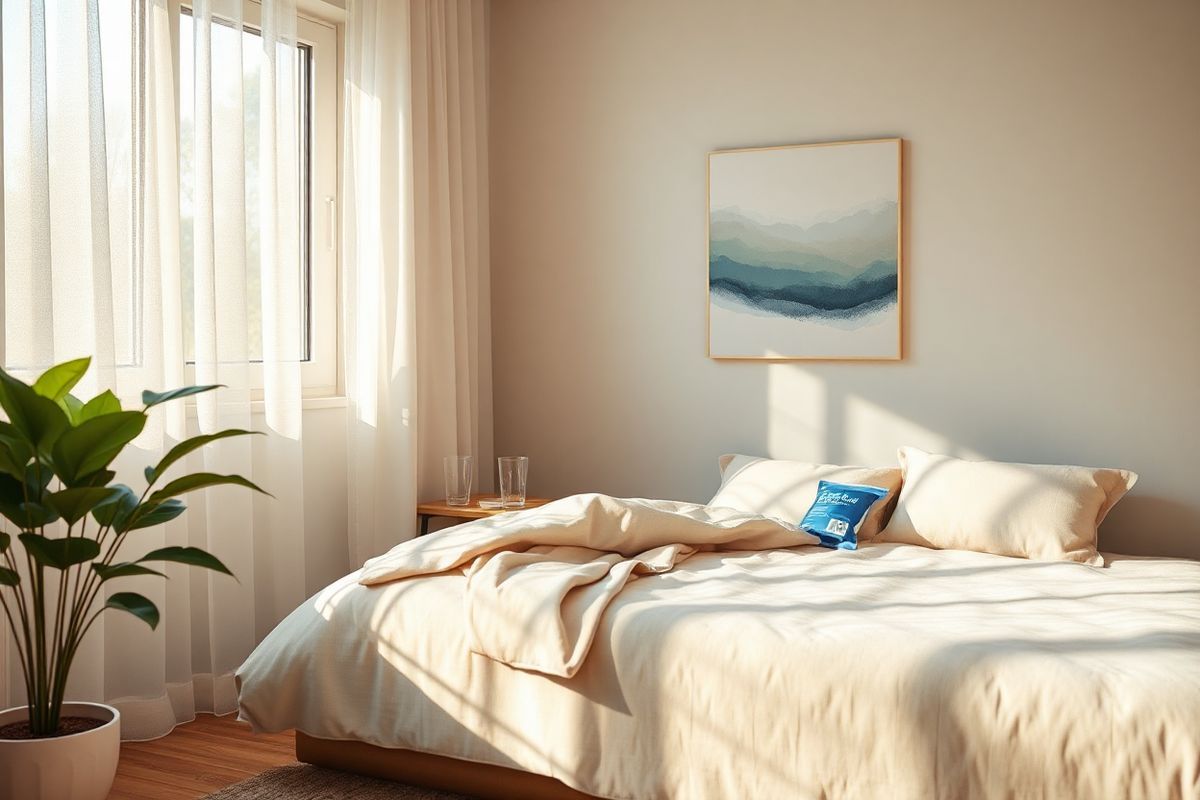Table of Contents
Understanding Migraines: Causes, Symptoms, and Triggers

migraines are a prevalent neurological disorder affecting over a billion people globally. They are not just severe headaches but a series of complex symptoms that can disrupt daily life significantly. A migraine typically manifests as a throbbing or pulsing pain on one side of the head, often accompanied by nausea, vomiting, and heightened sensitivity to light and sound (Cleveland Clinic, n.d.). There are various types of migraines, including chronic migraines that occur 15 or more days per month and episodic migraines that occur less frequently (Cleveland Clinic, n.d.; NHS, 2022).
Phases of a Migraine
Migraines progress through distinct phases:
- Prodrome: This phase can begin up to 24 hours before the headache, characterized by subtle changes such as mood shifts, fatigue, cravings, and increased urination.
- Aura: Some individuals experience an aura before head pain begins, which may include visual disturbances (e.g., zigzag lines) or sensory changes (e.g., tingling).
- Headache: The headache phase can last from four hours to three days, with pain intensifying with physical activity or exposure to bright lights.
- Postdrome: After the headache, individuals may feel drained or fatigued for up to 48 hours (Cleveland Clinic, n.d.).
Common Triggers
Understanding migraine triggers is essential for management. Common triggers include:
- Stress: Emotional or physical stress can precipitate an attack.
- Hormonal Changes: Fluctuations in estrogen, particularly during menstruation, can trigger migraines.
- Dietary Factors: Certain foods, such as aged cheese, caffeine, and alcohol, are known to provoke migraines.
- Sleep Disturbances: Both lack of sleep and oversleeping can contribute to migraine onset (NHS, 2022).
Home Remedies for Instant Migraine Relief

Several natural remedies can provide immediate relief from migraine symptoms. These remedies are based on traditional practices and emerging research, which suggests their effectiveness in alleviating migraine pain.
1. Calm Environment
Creating a calm environment can significantly alleviate migraine symptoms. At the first sign of an attack, retreat to a dark, quiet room. Light and noise often exacerbate the pain, so minimizing exposure to these stimuli can help you feel better faster (Mayo Clinic, 2022).
2. Temperature Therapy
Applying hot or cold compresses to your head or neck can provide relief. Ice packs can numb pain, while heat can relax tense muscles (Mayo Clinic, 2022). Experiment with both to see which provides better relief for you.
3. Caffeine Consumption
In small amounts, caffeine can help reduce migraine pain in the early stages. It can also enhance the effectiveness of other pain-relieving medications like acetaminophen and aspirin. However, be cautious, as excessive caffeine can lead to withdrawal headaches (Mayo Clinic, 2022).
4. Hydration
Dehydration can exacerbate migraines, so ensuring adequate fluid intake is crucial. Drinking water can aid digestion and help prevent migraines induced by dehydration (Mayo Clinic, 2022).
5. Dietary Adjustments
Keeping a food diary can help identify potential food triggers. Avoiding foods that are known to provoke migraines, such as aged cheese, chocolate, and processed meats, can help manage symptoms (Mayo Clinic, 2022).
6. Regular Exercise
Engaging in regular physical activity can reduce stress and improve overall health, both of which can help mitigate the frequency of migraines. Exercise releases endorphins that block pain signals to the brain (Mayo Clinic, 2022).
7. Sleep Hygiene
Establishing a consistent sleep schedule can help prevent migraines. Aim for 7-9 hours of quality sleep per night, and try to go to bed and wake up at the same time every day (Mayo Clinic, 2022).
Lifestyle Changes to Prevent Migraines: Simple Adjustments for Big Results
Making small lifestyle changes can lead to significant improvements in migraine frequency and intensity.
1. Stress Management
Implement stress-reduction techniques such as yoga, meditation, and deep-breathing exercises. These practices can help manage stress levels and potentially reduce migraine triggers (Mayo Clinic, 2022).
2. Regular Meal Patterns
Eating regular, balanced meals can prevent the onset of migraines. Skipping meals can lead to drops in blood sugar, which may trigger migraines (Mayo Clinic, 2022).
3. Limit Alcohol and Caffeine
Alcohol and excessive caffeine can trigger migraines in some individuals. Limiting intake can help reduce the frequency of attacks (Mayo Clinic, 2022).
4. Keep a Migraine Diary
Tracking your migraines in a diary can help identify patterns and triggers. Note when migraines occur, their duration, and potential triggers, which can be valuable information for discussions with your healthcare provider (Mayo Clinic, 2022).
The Power of Natural Ingredients: Herbal Remedies and Supplements
Natural remedies can also play a crucial role in migraine management.
1. Ginger
Ginger has anti-inflammatory properties that may help reduce migraine symptoms. Drinking ginger tea or consuming ginger in food can be beneficial (Mayo Clinic, 2022).
2. Butterbur and Feverfew
Both butterbur and feverfew have been shown to reduce the frequency of migraines. These herbal supplements can be taken in capsule form, but it is important to consult a healthcare provider before starting any new supplement regimen (Mayo Clinic, 2022).
3. Riboflavin (Vitamin B2)
Riboflavin may help decrease the frequency of migraines. A daily dose of around 400 mg has been suggested for migraine prevention (Mayo Clinic, 2022).
4. Magnesium
Some studies have indicated that magnesium deficiency may be linked to migraines. Taking magnesium supplements may help reduce the frequency of migraine attacks (Mayo Clinic, 2022).
Creating a Personalized Migraine Management Plan: Combining Techniques for Lasting Relief
A personalized migraine management plan can enhance the effectiveness of treatment strategies. Consider the following steps to develop your plan:
1. Consult a Healthcare Professional
A healthcare provider can help identify triggers and recommend appropriate medications. They may suggest preventive medications if you experience frequent migraines.
2. Incorporate Lifestyle Changes
Integrate lifestyle changes such as improved sleep hygiene, regular exercise, and stress management techniques into your daily routine.
3. Utilize Home Remedies
Experiment with home remedies to find what works best for you. This may include temperature therapy, hydration, and dietary adjustments.
4. Track Your Progress
Keep a migraine diary to monitor the effectiveness of your management plan and make necessary adjustments with the help of your healthcare provider.
FAQ Section
What is a migraine?
A migraine is a severe headache that causes throbbing pain, often accompanied by nausea, vomiting, and sensitivity to light and sound.
What are the main types of migraines?
The main types of migraines include migraine with aura, migraine without aura, chronic migraine, and menstrual migraine.
How can I prevent migraines?
Preventive measures include maintaining a regular sleep schedule, managing stress, eating balanced meals, and avoiding known triggers.
What natural remedies can help relieve migraines?
Natural remedies may include ginger, feverfew, butterbur, riboflavin, and magnesium supplements.
When should I see a doctor about my migraines?
If your migraines are frequent, severe, or worsening, it is important to consult a healthcare provider for further evaluation and management.
References
- Cleveland Clinic. (n.d.). Migraine: What It Is, Types, Causes, Symptoms & Treatments. Retrieved from https://my.clevelandclinic.org/health/diseases/5005-migraine-headaches
- NHS. (2022). Migraine. Retrieved from https://www.nhs.uk/conditions/migraine/
- Mayo Clinic. (2022). migraines: Simple steps to head off the pain. Retrieved from https://www.mayoclinic.org/diseases-conditions/migraine-headache/in-depth/migraines/art-20047242
- Natural Sleep Aids: Home Remedies to Help You Sleep. (n.d.). Retrieved from https://www.hopkinsmedicine.org/health/wellness-and-prevention/natural-sleep-aids-home-remedies-to-help-you-sleep
- 12 home remedies for stomach pain. (n.d.). Retrieved from https://www.medicalnewstoday.com/articles/322047
- Analysis of Acupoint Selection and Combinations in Acupuncture Treatment of Migraine: A Protocol for Data Mining. (2024). Retrieved from https://doi.org/10.2147/JPR.S489296
- Application of a minimally invasive full‐thickness autologous microcolumn skin harvesting device for donor site tissue collection and augmenting wound healing in a porcine wound model. (n.d.)










